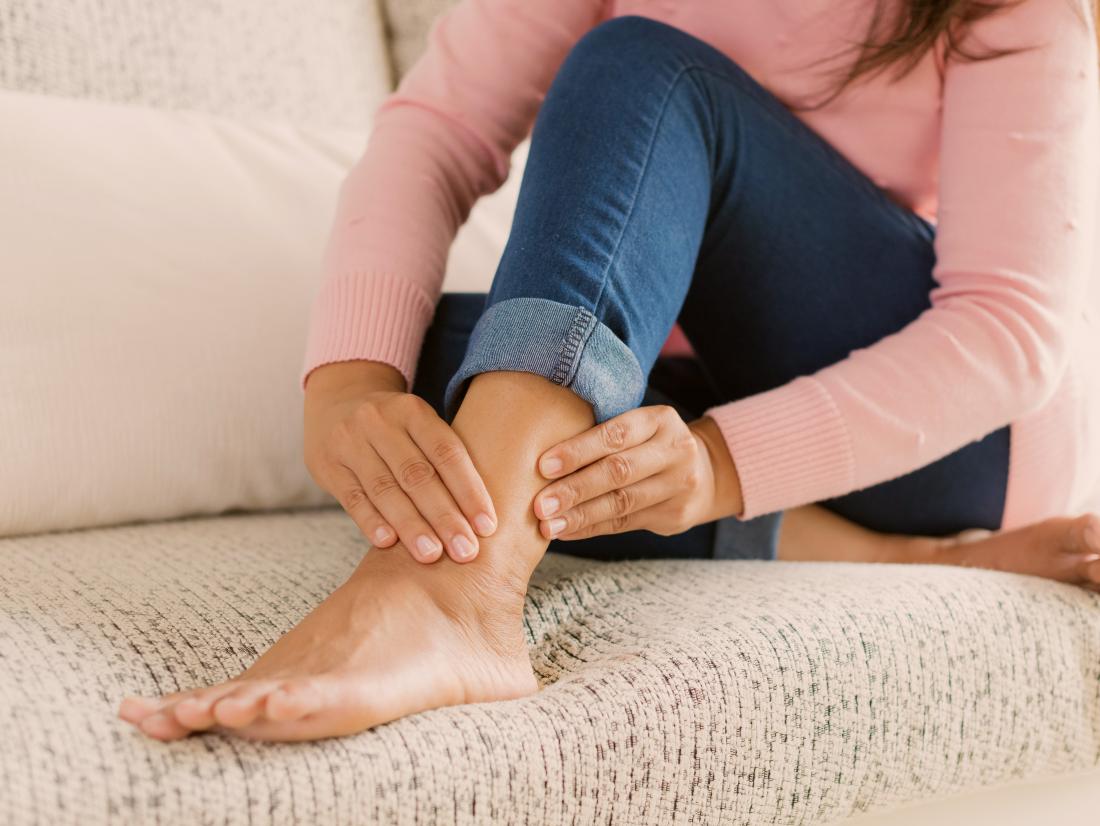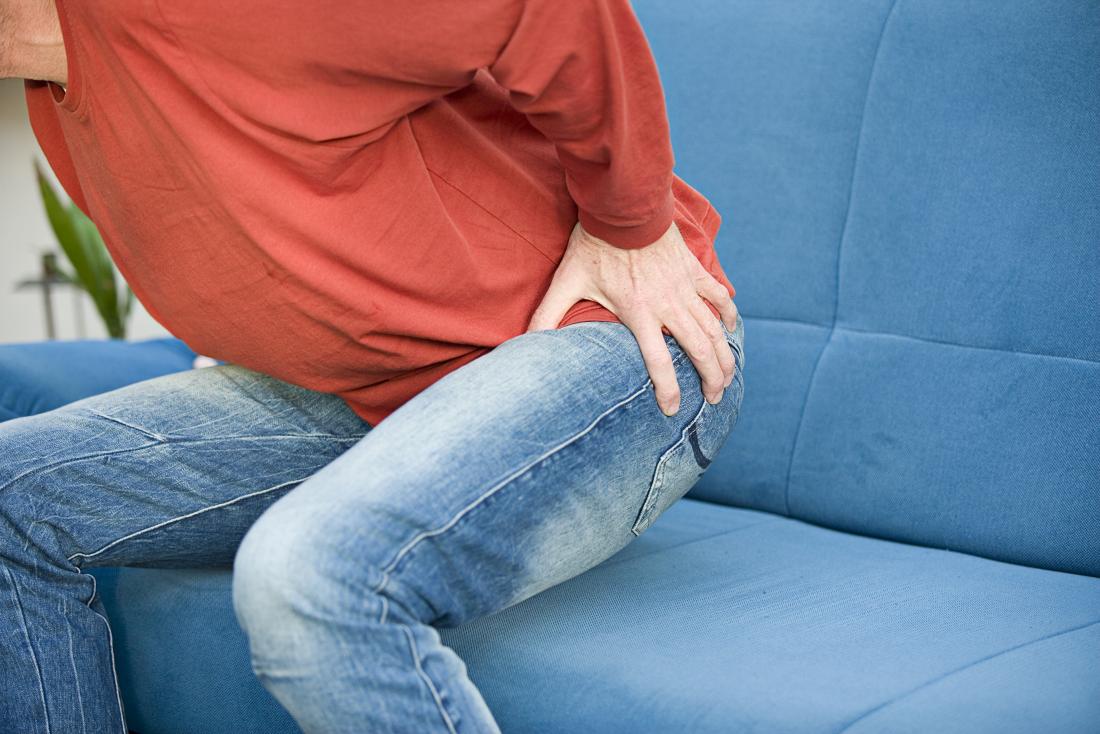Claudication is primarily a symptom of conditions that reduce blood flow in the legs, especially peripheral artery disease (PAD).
The term claudication comes from the Latin word for limp, which is ‘claudicare’. Claudication is also commonly referred to as intermittent claudication.
This article provides an overview of claudication, including its symptoms, why it happens, treatments, and how to manage symptoms at home.
Symptoms
A person with claudication may experience pain in the hip, thigh, or buttock.
In its early stages, claudication can cause a variety of sensations in the muscles that can include:
- pain
- cramping
- weakness
- tiredness
- aching
- burning
- heaviness or a ‘dead weight’ feeling
At first, claudication often causes a dull, aching pain in the lower calf. The initial pain or sensation can also travel to, or develop in, other muscle groups, such as:
- thigh
- buttock
- hip
- feet
People with jobs or hobbies that involve heavy physical labor or athletes that do repetitive arm motions can also develop claudication symptoms in their forearms and hands.
Symptoms typically occur during muscular exercise and go away with 1–2 minutes of rest while standing, or within 10 minutes, according to another source.
In some cases, symptoms first develop as weakness or tiredness during exercise. They then progress to more painful symptoms without proper rest.
People who continue exercising through their early discomfort may experience:
- numbness
- severe muscle cramps
- difficulty walking
- soft tissue damage, causing pain, tenderness, and temporary lameness
- cold or discolored skin
- weakened pulse
Claudication tends to only impact one leg, or one leg more than the other if both are involved. Symptoms often gradually worsen over the years, progressing back and forth between periods of improvement and flareups.
Though claudication symptoms often worsen over time, the amount or type of exercise that triggers them tends to stay the same. However, as claudication progresses, symptoms typically become more severe and may also occur during rest.
The following factors can heavily impact the severity and extent of claudication symptoms:
- any underlying conditions
- pattern and degree of narrowing or blockage
- blood flow rate to the affected muscular bed
- speed at which the condition progresses
Causes
Reduced blood flow in the arteries of the lower body or legs is the ultimate cause of claudication.
A reduction in blood is usually a symptom of atherosclerotic occlusive conditions. These are conditions where fats, debris, and immune cells form a buildup called plaque that sticks to blood vessel walls.
Plaque leads to narrowing, stiffening, and hardening of the arteries that reduces blood flow.
One of the most common conditions that doctors link with claudication is PAD, where blood vessels that supply the arms or legs have narrowed. Estimates suggest that between 10% and 20% of people with PAD experience claudication.
Symptoms usually arise during exercise when impaired arteries cannot keep up with the increased blood flow and oxygen demands of muscle cells.
In more severe cases, blood flow may become so compromised that symptoms occur even during rest.
The risk of developing claudication increases with age, specifically from 45 to 75 years, with the highest risk being from 65 to 75 years of age.
Males are twice as likely as females to develop claudication.
A few other factors may also increase the risk of claudication or worsen symptoms, usually by weakening blood vessels and promoting plaque development.
Most notably of these are:
Diagnosis

A doctor may perform a physical exam to diagnose claudication.
A doctor may diagnose claudication when identifying and treating an underlying cause.
To diagnose claudication and the condition causing it, a doctor will often:
- check several pulse points in the legs and feet
- review the person’s medical history
- ask questions about symptoms
- perform a physical exam
- order a base lipid profile to find levels of circulating fats
- use a Doppler ultrasound to look at blood flow in the impacted area
- use the ankle-brachial index (ABI) to compare the ratio of blood pressure in the ankle to the arm. Claudication is common with ABI scores between 0.4 and 0.9
- order an MRI scan to look for narrowed blood vessels
A doctor may also determine the severity of claudication to monitor how it progresses. By some classification systems, claudication severity is:
- mild with symptoms after walking 900 feet
- moderate with symptoms after walking 600 feet
- severe with symptoms after walking 300 feet
Treatment
The best treatment for claudication depends on the underlying cause and the severity or extent of symptoms.
Resting by standing still for a few minutes will normally stop the pain and discomfort that mild to moderate claudication causes.
People with mild claudication may also benefit from lifestyle changes to lessen factors that can worsen the condition. These lifestyle changes include:
Frequent, moderate exercise
In people who can exercise, undertaking frequent, moderate exercise may increase how far they can walk and reduce their pain.
Exercise also helps underlying problems that can worsen symptoms, such as:
- inactivity
- diabetes
- high blood pressure
- obesity
Some authorities recommend 30 minutes of brisk walking daily, walking until symptoms occur, then resting and returning to exercise.
The recommendation is then for a person to slowly aim to trigger symptoms in the first 5–7 minutes of walking. They can do this by increasing walking speed or gradient over time.
Stop smoking
Smoking damages the lining of blood vessels, reduces levels of good fats, or high-density lipoproteins (HDL) in blood vessels, and increases the levels of bad fats, or low-density lipoproteins (LDP).
Smoking also promotes harmful blood clotting. Nicotine, the active ingredient in tobacco, increases blood pressure.
Quitting smoking may slow disease progression and increase walking distance in people with conditions that cause claudication, such as PAD.
Eat a healthful diet
Saturated and trans fats can increase cholesterol levels and the risk of developing plaque in blood vessels.
Sodium can dehydrate the body and cause high blood pressure. Alcohol can also increase blood pressure.
Eating a diet of vegetables, fruits, whole grains, and unsaturated fats from low fat dairy products, nuts, seeds, and fish can usually improve cholesterol and blood pressure levels.
Manage stress
Chronic or severe stress can alter the blood and nervous system. Reducing stress with relaxing activities, such as yoga, meditation, getting outdoors, or talking with a friend, may help reduce stress.
Lose weight
Losing weight may improve symptoms by reducing the workload on the lower body. Obesity and inactivity are also risk factors for claudication.
Compression stockings or devices
Compressing the tissues and veins in the legs can improve blood and lymph circulation to ease symptoms of claudication.
In a 2015 study, 18 people with claudication pain wore intermittent, pneumatic calf and foot compression devices for 2 hours daily for 16 weeks.
At the end, they had less resting pain, improvement in walking time before the onset of pain, plus improvements in bodily pain, physical function, and healing.
Medications
More severe cases of claudication often require medications or surgery. Depending on the underlying cause and individual factors, there are some common options for severe or worsening cases.
Options include antiplatelet drugs, such as aspirin, clopidogrel, or cilostazol. These medicines can help prevent blood platelets from clumping into clots or plaques and growing.
In general, doctors may recommend 75–325 milligrams a day of aspirin for most people with claudication.
Clopidogrel is best for those who cannot take aspirin, and cilostazol is only suitable in limited cases.
People with high blood pressure, high cholesterol, or diabetes may also use management medications such as ACE-inhibitors, statins, or metformin.
Angioplasty
Angioplasty involves opening the constricted artery using a small balloon. A surgeon will then insert a tube called a stent to keep the artery open long term.
Bypass surgery
Bypass surgery is usually a last resort. This surgery involves creating a temporary detour for blood to travel around the impacted artery.
This intervention involves using a natural vein or synthetic graft. It does not remove or cure blockages.
Supplements and nutrients
Though there is little evidence for their effectiveness, several herbal supplements and nutrients may also help reduce the severity or progression of claudication symptoms, such as:
- Omega-3 fatty acids: These nutrients may help lower blood pressure and cholesterol levels, making the blood less thick and easier to pump. The effects may start to show within 1–4 months of continual use.
- Vitamin E: Antioxidants called tocopherols and tocotrienol may help improve exercise tolerance by preventing free radical action that may harm cells during periods of reduced blood flow or oxygen.
- Garlic: An active ingredient in garlic called allicin may lower cholesterol levels and inhibit platelet adhesion. However, individuals may need to take very high doses (7+ cloves a day) to obtain these benefits.
Complications

Constant pain is a possible complication of claudication.
Severe, usually long term cases of claudication can cause serious complications, including:
- constant pain
- difficulty walking, exercising, or doing everyday activities
- slow healing skin sores and wounds
- chronically cold and darkened skin
- hair loss
- impotence
- severe skin infections, such as gangrene
In rare cases, people with severe or untreated claudication or infections may also experience:
Summary
Claudication causes pain or discomfort in the lower body during exercise that quickly resolves with rest. It arises as a symptom of other medical conditions, most commonly those that narrow, block, or harden blood vessels.
Claudication symptoms may remain stable, worsen over years, or suddenly become so severe they cause disability, depending on the cause. However, several lifestyle changes, medications, and other treatment options seem to slow the progression of the condition or reduce symptom severity.
People with signs and symptoms of claudication should talk with a doctor as soon as possible to reduce the risk of complications.
